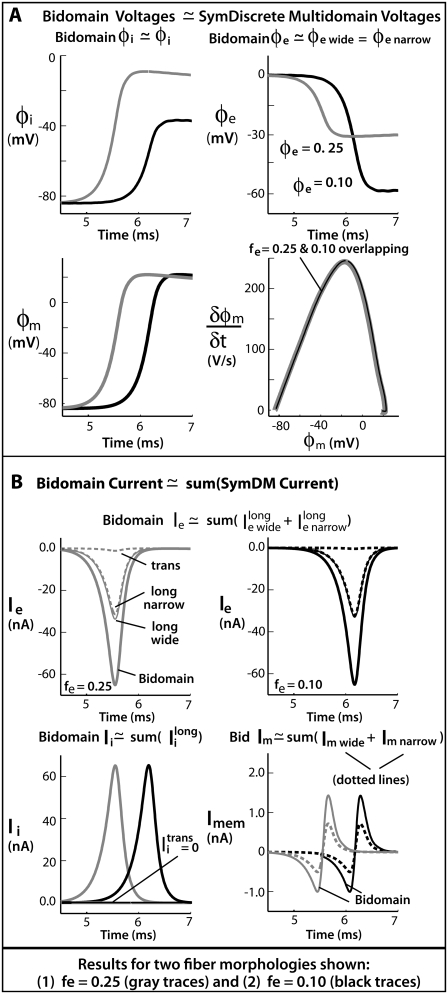FIGURE 3.
Results comparing a symmetrically defined discrete multidomain model to an equivalent bidomain representation for two fiber morphologies: 1), fe = 0.25 (shaded traces), θ = 56.7 cm/s; and 2), fe = 0.10 (solid traces), θ = 49.5 cm/s. Although the depth of the surrounding extracellular space is consistently defined in the SymDM model, results differentiate the narrow from the wide regions (defined in the asymmetric models) for comparison purposes. Definitions for these two regions are depicted in Fig. 2. (A) Recorded bidomain potentials and the corresponding averaged potentials from the symmetric discrete multidomain were equivalent. Depicted from left to right are intracellular, extracellular, transmembrane, and corresponding phase-plane plots. As predicted by cable theory, the resulting action potentials for the two fiber morphologies were the same. (B) Calculated bidomain currents were equivalent to the corresponding current sum from the symmetric discrete multidomain. Depicted from left to right are membrane, extracellular (fe = 0.25), extracellular (fe = 0.10), and intracelluar. Since the intracellular and extracellular spaces were isopotential within a SymDM dz slice, the perimetrical membrane current was homogenous, i.e., Im wide = Im narrow. Since the defined narrow region is smaller than the wide region, the SymDM extracellular current traces show this bias with a slightly smaller  to
to  and a nonzero
and a nonzero  which is even more slight in the fe = 0.10 case.
which is even more slight in the fe = 0.10 case.

